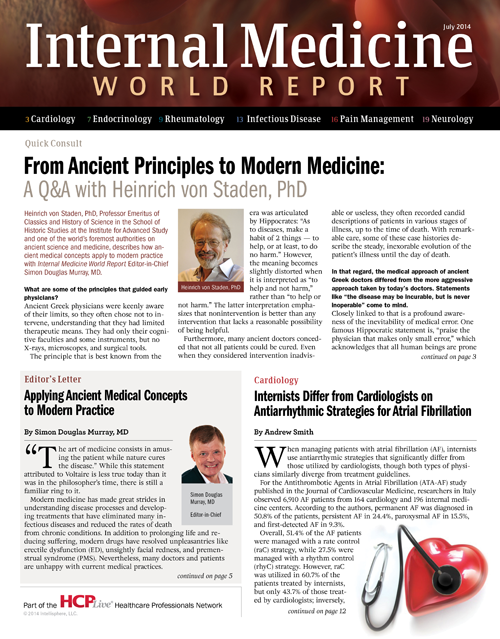Publication
Article
Internal Medicine World Report
Nonalcoholic Fatty Liver Disease Often Mishandled, Neglected in Primary Care
Author(s):
Despite the debilitating symptoms associated with nonalcoholic fatty liver disease, an alarming proportion of primary care providers mistreat or overlook the disease in their patients

Despite the debilitating symptoms associated with nonalcoholic fatty liver disease (NAFLD), an alarming proportion of primary care providers (PCPs) mistreat or overlook the disease in their patients, according to research published in the American Journal of Gastroenterology.
For their study, Pierre Blais, MD, and co-contributors from the Baylor College of Medicine and the Michael E. DeBakey Veterans Affairs (VA) Medical Center in Houston, screened the medical records of 120,226 patients who sought care at the VA hospital between 2001 and 2011.
From a preliminary pool of 19,692 eligible study candidates, the researchers randomly selected a sample of 450 patients for detailed chart review. Based on that data, Blais and his co-authors classified patients as having NAFLD if they had “documented evidence of persistently elevated liver enzymes measured in the outpatient setting, and no indication of chronic viral hepatitis or excessive alcohol use in the 24 months before alanine transaminase (ALT) elevation, in the presence of metabolic syndrome.”
To create a standard for effective NAFLD treatment, the researchers referred to progress notes from PCPs, imaging orders, and test results. With that information, the authors searched through the patients’ medical records for the endpoints of “recognition of transaminase elevation, consideration of NAFLD or nonalcoholic steatohepatitis (NASH) as a possible diagnosis, recommendations for lifestyle modifications, and referral for specialist evaluation.”
In doing so, the investigators determined 251 patients had NAFLD. A notable number of the NAFLD patients were comorbid for hypertension (55.0%), hypertriglyceridemia (75.3%), hyperlipidemia (79.3%), or diabetes mellitus (41.8%). Furthermore, a significant amount of those with NAFLD had a body mass index (BMI) ≥35 or ≥40 and were male, non-Hispanic White patients, though the researchers claimed that race did not influence the quality or type of care that an NAFLD patient received.
Of those found to have NAFLD, “99 (39.4%) had documentation of abnormal transaminases in the PCP notes, 54 (21.5%) were ascribed NAFLD as a possible diagnosis, 37 (14.7%) were counseled regarding diet modification and exercise, and 26 (10.4%) were referred to a specialist for further evaluation,” the authors penned. However, only 99 patients (39.4%) completed one of those treatment methods.
In light of their findings, the investigators suggested the disparity in NAFLD care could be traced to “gaps in provider knowledge and awareness of relevant practice guide,” as they reported that PCPs are solely providing NAFLD care to individuals with high ALT levels.
“Over 40% of PCPs surveyed in this study were not familiar with clinical published guidelines for NAFLD management,” the authors noted. “This suboptimal knowledge translated into paradoxical screening practices.”
As a possible solution, the researchers recommended providing additional education on the effects, symptoms, and risk factors of NAFLD to PCPs.
“We believe that recognition and counseling on NAFLD and the underlying metabolic syndrome are essential first steps to any successful management program, especially if new treatments arise in the future,” the investigators wrote.






